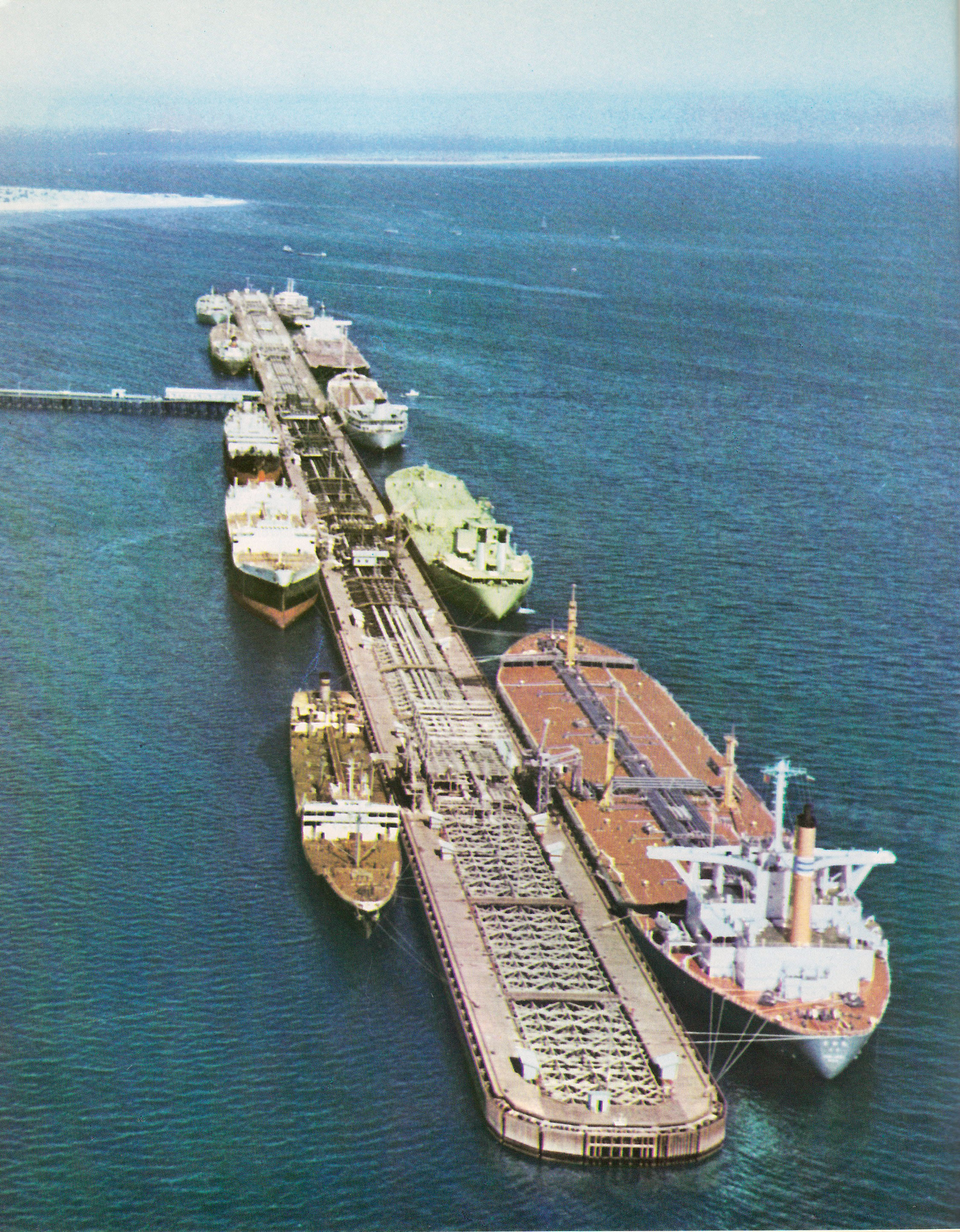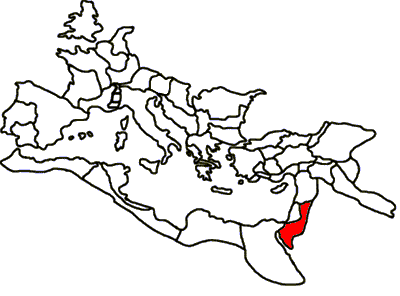|
Kharg Island
Kharg or Khark Island ( fa, جزیره خارک) is a continental island in the Persian Gulf belonging to Iran. The island is located off the coast of Iran and northwest of the Strait of Hormuz. Its total area is . Administered by the adjacent coastal Bushehr Province, Khark Island provides a sea port for the export of oil and extends Iranian territorial sea claims into the Persian Gulf oil fields. Located on Khark Island is Khark, the only city in the Khark District. History Mentioned in the '' Hudud al-'Alam'' as a good source for pearls around 982 AD, Khark was visited by the French traveller Jean de Thévenot in 1665, who recorded trade at the time with Isfahan and Basra. In 1753 the Dutch Empire established both a trading post and a fort on the island after securing perpetual ownership of the island from Mir Nasáir, the Arab ruler of Bandar Rig, in return for a present of 2000 rupees. In 1766 the Dutch fort was captured by Mir Mahanna, the governor of Bandar Rig. T ... [...More Info...] [...Related Items...] OR: [Wikipedia] [Google] [Baidu] |
Persian Gulf
The Persian Gulf ( fa, خلیج فارس, translit=xalij-e fârs, lit=Gulf of Persis, Fars, ), sometimes called the ( ar, اَلْخَلِيْجُ ٱلْعَرَبِيُّ, Al-Khalīj al-ˁArabī), is a Mediterranean sea (oceanography), mediterranean sea in Western Asia. The body of water is an extension of the Indian Ocean located between Iran and the Arabian Peninsula.United Nations Group of Experts on Geographical NameWorking Paper No. 61, 23rd Session, Vienna, 28 March – 4 April 2006. accessed October 9, 2010 It is connected to the Gulf of Oman in the east by the Strait of Hormuz. The Shatt al-Arab river delta forms the northwest shoreline. The Persian Gulf has many fishing grounds, extensive reefs (mostly rocky, but also Coral reef, coral), and abundant pearl oysters, however its ecology has been damaged by industrialization and oil spills. The Persian Gulf is in the Persian Gulf Basin, which is of Cenozoic origin and related to the subduction of the Arabian Plate u ... [...More Info...] [...Related Items...] OR: [Wikipedia] [Google] [Baidu] |
Iraqi Air Force
The Iraqi Air Force (IQAF or IrAF) ( ar, القوات الجوية العراقية, Al Quwwat al Jawwiyah al Iraqiyyah}) is the aerial warfare service branch of the Iraqi Armed Forces. It is responsible for the defense of Iraqi airspace as well as the policing of its international borders. The IQAF also acts as a support force for the Iraqi Navy and the Iraqi Army, which allows Iraq to rapidly deploy its military. It is headquartered in Baghdad; the current commander is Gen. Shihab Jahid Ali. The Iraqi Air Force was founded in 1931, during the period of British control in Iraq after their defeat of the Ottomans in the First World War, with only a few pilots. The Iraqi Air Force operated mostly British aircraft until the 14 July Revolution in 1958, when the new Iraqi government began increased diplomatic relationships with the Soviet Union. The air force used both Soviet and British aircraft throughout the 1950s and 1960s. When Saddam Hussein came to power in 1979, the air force ... [...More Info...] [...Related Items...] OR: [Wikipedia] [Google] [Baidu] |
Nestorianism
Nestorianism is a term used in Christian theology and Church history to refer to several mutually related but doctrinarily distinct sets of teachings. The first meaning of the term is related to the original teachings of Christian theologian Nestorius (d. 450), who promoted specific doctrines in the fields of Christology and Mariology. The second meaning of the term is much wider, and relates to a set of later theological teachings, that were traditionally labeled as Nestorian, but differ from the teachings of Nestorius in origin, scope and terminology. The ''Oxford English Dictionary'' defines Nestorianism as "The doctrine of Nestorius, patriarch of Constantinople (appointed in 428), by which Christ is asserted to have had distinct human and divine persons." Original Nestorianism is attested primarily by works of Nestorius, and also by other theological and historical sources that are related to his teachings in the fields of Mariology and Christology. His theology was influ ... [...More Info...] [...Related Items...] OR: [Wikipedia] [Google] [Baidu] |
Megalith
A megalith is a large stone that has been used to construct a prehistoric structure or monument, either alone or together with other stones. There are over 35,000 in Europe alone, located widely from Sweden to the Mediterranean sea. The word was first used in 1849 by the British antiquarian Algernon Herbert in reference to Stonehenge and derives from the Ancient Greek words "mega" for great and " lithos" for stone. Most extant megaliths were erected between the Neolithic period (although earlier Mesolithic examples are known) through the Chalcolithic period and into the Bronze Age. At that time, the beliefs that developed were dynamism and animism, because Indonesia experienced the megalithic age or the great stone age in 2100 to 4000 BC. So that humans ancient tribe worship certain objects that are considered to have supernatural powers. Some relics of the megalithic era are menhirs (stone monuments) and dolmens (stone tables). Types and definitions While "megalith" ... [...More Info...] [...Related Items...] OR: [Wikipedia] [Google] [Baidu] |
Palmyrene Empire
The Palmyrene Empire was a short-lived breakaway state from the Roman Empire resulting from the Crisis of the Third Century. Named after its capital city, Palmyra, it encompassed the Roman provinces of Syria Palaestina, Arabia Petraea, and Egypt, as well as large parts of Asia Minor. The Palmyrene Empire was ruled by Queen Zenobia, officially as regent for her son Vaballathus, who inherited the throne in 267 at age ten. In 270, Zenobia rapidly conquered most of the Roman east, attempting to maintain relations with Rome as a legitimate power. In 271, she claimed the imperial title for both herself and her son, fighting a short war with the Roman emperor Aurelian, who conquered Palmyra and captured Zenobia. A year later the Palmyrenes rebelled, which led Aurelian to destroy Palmyra. Despite its brief existence, the Palmyrene Empire is remembered for having been ruled by one of the most ambitious and powerful women in antiquity. It is also hailed in Syria, where it plays an import ... [...More Info...] [...Related Items...] OR: [Wikipedia] [Google] [Baidu] |
Petra
Petra ( ar, ٱلْبَتْرَاء, Al-Batrāʾ; grc, Πέτρα, "Rock", Nabataean Aramaic, Nabataean: ), originally known to its inhabitants as Raqmu or Raqēmō, is an historic and archaeological city in southern Jordan. It is adjacent to the mountain of Jebel al-Madhbah, Jabal Al-Madbah, in a Depression (geology), basin surrounded by mountains forming the eastern flank of the Arabah valley running from the Dead Sea to the Gulf of Aqaba. The area around Petra has been inhabited from as early as 7000 BC, and the Nabataeans might have settled in what would become the capital city of Nabataean Kingdom, their kingdom as early as the 4th century BC. Archaeological work has only discovered evidence of Nabataean presence dating back to the second century BC, by which time Petra had become their capital. The Nabataeans were nomadic Arabs who invested in Petra's proximity to the incense trade routes by establishing it as a major regional trading hub. The trading business gained ... [...More Info...] [...Related Items...] OR: [Wikipedia] [Google] [Baidu] |
Nike (mythology)
In Greek mythology, Nike (; grc, Νίκη, lit=victory, ancient: , modern: ) was a goddess who personified victory in any field including art, music, war, and athletics. She is often portrayed in Greek art as Winged Victory in the motion of flight; however, she can also appear without wings as "Wingless Victory" when she is being portrayed as an attribute of another deity such as Athena.Suidas. ''The Suda on Line: Byzantine Lexicography''. Translated by Whitehead, David, et al. (2014). Accessed 9 December 2022. https://www.cs.uky.edu/~raphael/sol/sol-html/ In Greek literature Nike is described as both an attribute and attendant to the gods Zeus and Athena. Nike gained this honored role beside Zeus during the Titanomachy where she was one of the first gods to offer her allegiance to Zeus. At Athens, Nike became a servant to Athena as well as an attribute of her due to the prominent status Athena held in her patron city. The fusion of the two goddesses at Athens has contributed to ... [...More Info...] [...Related Items...] OR: [Wikipedia] [Google] [Baidu] |
Palmyra
Palmyra (; Palmyrene: () ''Tadmor''; ar, تَدْمُر ''Tadmur'') is an ancient city in present-day Homs Governorate, Syria. Archaeological finds date back to the Neolithic period, and documents first mention the city in the early second millennium BC. Palmyra changed hands on a number of occasions between different empires before becoming a subject of the Roman Empire in the first century AD. The city grew wealthy from trade caravans; the Palmyrenes became renowned as merchants who established colonies along the Silk Road and operated throughout the Roman Empire. Palmyra's wealth enabled the construction of monumental projects, such as the Great Colonnade, the Temple of Bel, and the distinctive tower tombs. Ethnically, the Palmyrenes combined elements of Amorites, Arameans, and Arabs. The city's social structure was tribal, and its inhabitants spoke Palmyrene Aramaic, a variety of Western Middle Aramaic, while using Koine Greek for commercial and diplomatic purposes. ... [...More Info...] [...Related Items...] OR: [Wikipedia] [Google] [Baidu] |
Seleucid Empire
The Seleucid Empire (; grc, Βασιλεία τῶν Σελευκιδῶν, ''Basileía tōn Seleukidōn'') was a Greek state in West Asia that existed during the Hellenistic period from 312 BC to 63 BC. The Seleucid Empire was founded by the Macedonian general Seleucus I Nicator, following the division of the Macedonian Empire originally founded by Alexander the Great. After receiving the Mesopotamian region of Babylonia in 321 BC, Seleucus I began expanding his dominions to include the Near Eastern territories that encompass modern-day Iraq, Iran, Afghanistan, Syria, all of which had been under Macedonian control after the fall of the former Persian Achaemenid Empire. At the Seleucid Empire's height, it had consisted of territory that had covered Anatolia, Persia, the Levant, and what are now modern Iraq, Kuwait, Afghanistan, and parts of Turkmenistan. The Seleucid Empire was a major center of Hellenistic culture. Greek customs and language were privileged; the wide varie ... [...More Info...] [...Related Items...] OR: [Wikipedia] [Google] [Baidu] |
Entryway
A lobby is a room in a building used for entry from the outside. Sometimes referred to as a foyer, reception area or an entrance hall, it is often a large room or complex of rooms (in a theatre, opera house, concert hall, showroom, cinema, etc.) adjacent to the auditorium. It may be a repose area for spectators, especially used before performance and during intermissions, but also as a place of celebrations or festivities after performance. Since the mid-1980s, there has been a growing trend to think of lobbies as more than just ways to get from the door to the elevator but instead as social spaces and places of commerce. Some research has even been done to develop scales to measure lobby atmosphere to improve hotel lobby design. Many office buildings, hotels and skyscrapers go to great lengths to decorate their lobbies to create the right impression and convey an image. [...More Info...] [...Related Items...] OR: [Wikipedia] [Google] [Baidu] |
Nabataean
The Nabataeans or Nabateans (; Nabataean Aramaic: , , vocalized as ; Arabic: , , singular , ; compare grc, Ναβαταῖος, translit=Nabataîos; la, Nabataeus) were an ancient Arab people who inhabited northern Arabia and the southern Levant. Their settlements—most prominently the assumed capital city of Raqmu (present-day Petra, Jordan)—gave the name ''Nabatene'' ( grc, Ναβατηνή, translit=Nabatēnḗ) to the Arabian borderland that stretched from the Euphrates to the Red Sea. The Nabateans emerged as a distinct civilization and political entity between the 4th and 2nd centuries BCE,Taylor, Jane (2001). ''Petra and the Lost Kingdom of the Nabataeans''. London: I.B.Tauris. pp. 14, 17, 30, 31. . Retrieved 8 July 2016. with their kingdom centered around a loosely controlled trading network that brought considerable wealth and influence across the ancient world. Described as fiercely independent by contemporary Greco-Roman accounts, the Nabataeans were annexed ... [...More Info...] [...Related Items...] OR: [Wikipedia] [Google] [Baidu] |
Parthian Empire
The Parthian Empire (), also known as the Arsacid Empire (), was a major Iranian political and cultural power in ancient Iran from 247 BC to 224 AD. Its latter name comes from its founder, Arsaces I, who led the Parni tribe in conquering the region of Parthia in Iran's northeast, then a satrapy (province) under Andragoras, who was rebelling against the Seleucid Empire. Mithridates I (r. c. 171–132 BC) greatly expanded the empire by seizing Media and Mesopotamia from the Seleucids. At its height, the Parthian Empire stretched from the northern reaches of the Euphrates, in what is now central-eastern Turkey, to present-day Afghanistan and western Pakistan. The empire, located on the Silk Road trade route between the Roman Empire in the Mediterranean Basin and the Han dynasty of China, became a center of trade and commerce. The Parthians largely adopted the art, architecture, religious beliefs, and royal insignia of their culturally heterogene ... [...More Info...] [...Related Items...] OR: [Wikipedia] [Google] [Baidu] |








%2C_Nisa_mint.jpg)